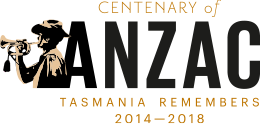Captain Keith Heritage MC

Keith Heritage in September 1914 in a group portrait in the Officer's Mess in Rabaul. Group portrait in the Officers' Mess of Australian Naval and Military Expeditionary Force (AN&MEF). Back row, left to right: Lieutenant (Lt) A Anderson; Captain (Capt) E W Kirke; unidentified; Lt G Manning; Lt Keith Heritage; Lt R Norman; Lt J. Westgarth; Lieutenant Commander Livesay; Lt I Sherbon; Lt W Penley; Lt C A. Manning; Mess waiters. Second row: Mr Jolly; Lt Partridge; Capt Ravenscroft; Lt McDowell; Lt Sampson; Capt Harcus; Major (Maj) Beardsmore; Lt Bruce; Lt H W Johnson; Lt R M Sadler; Lt Quinn; Capt A W Ralston; unidentified; Lt Collins; Mess waiters. Front row: Capt T McPherson; Capt J A Travers; Maj Francis Heritage; Colonel William Holmes DSO; Lieutenant Colonel (Lt Col) Paton; Lt Col Russell Watson; Maj F A Maguire; Capt C H Lane; Lt Basil Holmes; Lt Strasbourg RAN. Australian War Memorial A03234
Rower
Born: Longford 16 September 1882
Occupation: Traffic Manager
Tasmanian-born rower Keith Heritage enlisted on 11 August 1914 and is credited to be the first Australian to volunteer for World War One.
Keith Heritage was a well-known oarsman who rowed in a winning crew that competed in Perth, Brisbane and Sydney, and was a member of the Australian crew that won the Grand Challenge Cup at the Royal Henley Regatta in 1912. He was selected as reserve for the rowing eight at the 1912 Olympics in Stockholm until Hugh Ward replaced him in that crew. Some believe dropping Heritage from the crew was a mistake as the British beat the Australian team in the finals.
At the outbreak of World War One, Keith Heritage, was almost 32 years old, and employed as traffic manager for the Union Steam Ship Company in Sydney. His previous military experience had included five years with the Tasmanian Infantry Regiment as a Sergeant in the machine gun section and six years with the Launceston Rifle Regiment.
Keith Heritage was appointed Lieutenant transport officer with the Australian Naval and Military Expeditionary Force and sailed on the HMAT Berima on 17 August 1914 to Rabual, in New Guinea. The Australian Naval and Military Expeditionary Force was a mixed military force that aimed to remove the German threat from the Pacific. Lieutenant Heritage was part of the force that secured the German communications facility in German New Guinea.
On 21 August 1915 Lieutenant Heritage landed at Gallipoli with fellow Sydney Rowing Club rower Sydney Middleton as part of the 19th Australian Infantry Battalion. During 1915, he was promoted to Captain. Captain Heritage left the Gallipoli peninsula during the evacuation on the night of 19 December and was one of the last Anzacs to be evacuated from the peninsula.
Captain Heritage served on the Western Front in France and was awarded the Military Cross for his successful raid on enemy trenches on the nights of 25 and 26 June 1916. During the raid, about 20 of the enemy were killed and four prisoners taken. Captain Heritage carried back a wounded man single handed, and throughout the raid set an example of cool courage.
A month after Captain Heritage’s gallant raid, he was killed in action in France on 26 July 1916. According to a statement by Lieutenant L Layton-Smith:
“Captain Heritage was killed outright at Pozieres on 26 July 1916. He was buried in the field at Pozieres and a cross was erected over his grave. This however may now have disappeared in view of the subsequent fighting which took place on that ground in 1918.”
Captain Heritage is commemorated in the Pozieres British Cemetery Ovillers-La Boisselle, Pozieres, Picardie, France.
Captain Keith Heritage MC was the son of George Heritage, Tasmania’s Chief Inspector of Education.
References
https://www.rowingnsw.asn.au/news/1337/670/World-War-1-A-Call-to-Oarsmen.html


